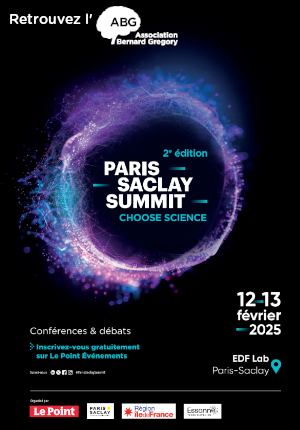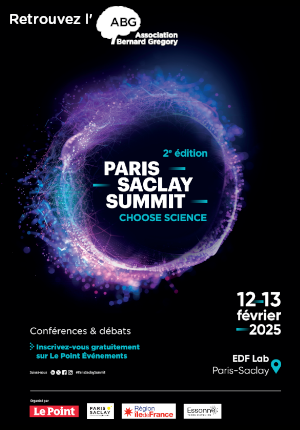Conception et intégration de microlasers dans une plateforme photonique silicium // Design and integration of microlasers within a silicon photonics platform
| ABG-128257 | Sujet de Thèse | |
| 01/02/2025 | Financement public/privé |
CEA Université Grenoble Alpes Laboratoire d’Intégration Photonique sur Silicium
Grenoble
Conception et intégration de microlasers dans une plateforme photonique silicium // Design and integration of microlasers within a silicon photonics platform
- Sciences de l’ingénieur
- Numérique
Photonique, imageurs et écrans / Défis technologiques
Description du sujet
Depuis une dizaine d’années, l’augmentation continue du trafic internet pousse les interconnexions électriques des centres de données vers leur limite en terme de débit, de densité et de consommation. En remplaçant ces liens électriques par des fibres optiques et en intégrant sur puce l’ensemble des fonctions optiques nécessaires à la réalisation d’émetteurs-récepteurs (transceivers), la photonique sur silicium représente une opportunité unique de répondre à ces problématiques. L’intégration d’une source de lumière (laser) au sein d’une puce photonique est une brique essentielle pour le développement de cette technologie. Si de nombreuses démonstrations reposent sur l’utilisation de lasers externes, ou de puces laser aboutées, c’est bien la fabrication hétérogène directe d’un laser sur la puce photonique qui permettrait d’atteindre le niveau de performances souhaité tout en limitant les couts.
L’objectif de cette thèse est d’apporter une solution inédite à la gestion des communications très courtes distances (inter-puces, intra-puces) en réalisant, sur silicium, des microlasers de type membrane III-V à hétéro-structure enterrée. Cette architecture de laser permet de répondre aux nombreux défis des liens très courtes distances grâce à un compromis efficacité/intégrabilité supérieur à l’état de l’art tout en étant compatibles avec les lignes de fabrication CMOS.
L’étudiant aura la charge de (i) dimensionner les microlasers grâce aux outils de simulations numériques disponibles au laboratoire puis (ii) fabriquer ces microlasers en s’appuyant sur les plateformes technologiques du CEA-LETI et du LTM/CNRS et enfin (iii) de caractériser électro-optiquement les composants. Ce travail de thèse sera effectué en collaboration entre le CEA-LETI et le LTM/CNRS et constituera une brique stratégique, nécessaire aux futures générations de transceivers photoniques.
------------------------------------------------------------------------------------------------------------------------------------------------------------------------
------------------------------------------------------------------------------------------------------------------------------------------------------------------------
For about ten years, the continuous increase in internet traffic has pushed the electrical interconnections of data centers to their limits in terms of bandwidth, density, and consumption. By replacing these electrical links with optical fibers and integrating all the necessary optical functions on a chip to create transmitters-receivers (transceivers), silicon photonics represents a unique opportunity to address these issues. The integration of a light source within a photonic chip is an essential building block for the development of this technology. While many demonstrations rely on the use of external lasers or bonded laser chips, it is the direct heterogeneous fabrication of a laser within the photonic chip that would allow the desired level of performance while limiting costs.
The objective of this thesis is to provide an innovative solution for the management of very short-distance communications (inter-chip, intra-chip) by realizing, on silicon, III-V membrane microlaserswith buried heterostructures. This type of microlasermeets the numerous challenges of very short-distance links thanks to an efficiency/integrabilitycompromise superior to the state of the art of datacomlasers while being compatible with CMOS fabrication lines.
Based on the work carried out during a previous thesis, the PhD student will be responsible for (i) designing the microlasersusing the available digital simulation tools in the laboratory, then (ii) manufacturing these microlasersby relying on the technological platforms of CEA-LETI, and finally (iii) electro-optically characterizing the components. This thesis work will be carried out in collaboration between CEA-LETI and LTM/CNRS and will constitute a strategic brick necessary for future generations of photonic transceivers.
------------------------------------------------------------------------------------------------------------------------------------------------------------------------
------------------------------------------------------------------------------------------------------------------------------------------------------------------------
Pôle fr : Direction de la Recherche Technologique
Pôle en : Technological Research
Département : Département d’Optronique (LETI)
Service : Service des Nouvelles Applications de la Photonique
Laboratoire : Laboratoire d’Intégration Photonique sur Silicium
Date de début souhaitée : 01-09-2025
Ecole doctorale : Electronique, Electrotechnique, Automatique, Traitement du Signal (EEATS)
Directeur de thèse : BARON Thierry
Organisme : LTM/CNRS-UJF
Laboratoire : Materiaux - Epitaxie
L’objectif de cette thèse est d’apporter une solution inédite à la gestion des communications très courtes distances (inter-puces, intra-puces) en réalisant, sur silicium, des microlasers de type membrane III-V à hétéro-structure enterrée. Cette architecture de laser permet de répondre aux nombreux défis des liens très courtes distances grâce à un compromis efficacité/intégrabilité supérieur à l’état de l’art tout en étant compatibles avec les lignes de fabrication CMOS.
L’étudiant aura la charge de (i) dimensionner les microlasers grâce aux outils de simulations numériques disponibles au laboratoire puis (ii) fabriquer ces microlasers en s’appuyant sur les plateformes technologiques du CEA-LETI et du LTM/CNRS et enfin (iii) de caractériser électro-optiquement les composants. Ce travail de thèse sera effectué en collaboration entre le CEA-LETI et le LTM/CNRS et constituera une brique stratégique, nécessaire aux futures générations de transceivers photoniques.
------------------------------------------------------------------------------------------------------------------------------------------------------------------------
------------------------------------------------------------------------------------------------------------------------------------------------------------------------
For about ten years, the continuous increase in internet traffic has pushed the electrical interconnections of data centers to their limits in terms of bandwidth, density, and consumption. By replacing these electrical links with optical fibers and integrating all the necessary optical functions on a chip to create transmitters-receivers (transceivers), silicon photonics represents a unique opportunity to address these issues. The integration of a light source within a photonic chip is an essential building block for the development of this technology. While many demonstrations rely on the use of external lasers or bonded laser chips, it is the direct heterogeneous fabrication of a laser within the photonic chip that would allow the desired level of performance while limiting costs.
The objective of this thesis is to provide an innovative solution for the management of very short-distance communications (inter-chip, intra-chip) by realizing, on silicon, III-V membrane microlaserswith buried heterostructures. This type of microlasermeets the numerous challenges of very short-distance links thanks to an efficiency/integrabilitycompromise superior to the state of the art of datacomlasers while being compatible with CMOS fabrication lines.
Based on the work carried out during a previous thesis, the PhD student will be responsible for (i) designing the microlasersusing the available digital simulation tools in the laboratory, then (ii) manufacturing these microlasersby relying on the technological platforms of CEA-LETI, and finally (iii) electro-optically characterizing the components. This thesis work will be carried out in collaboration between CEA-LETI and LTM/CNRS and will constitute a strategic brick necessary for future generations of photonic transceivers.
------------------------------------------------------------------------------------------------------------------------------------------------------------------------
------------------------------------------------------------------------------------------------------------------------------------------------------------------------
Pôle fr : Direction de la Recherche Technologique
Pôle en : Technological Research
Département : Département d’Optronique (LETI)
Service : Service des Nouvelles Applications de la Photonique
Laboratoire : Laboratoire d’Intégration Photonique sur Silicium
Date de début souhaitée : 01-09-2025
Ecole doctorale : Electronique, Electrotechnique, Automatique, Traitement du Signal (EEATS)
Directeur de thèse : BARON Thierry
Organisme : LTM/CNRS-UJF
Laboratoire : Materiaux - Epitaxie
Nature du financement
Financement public/privé
Précisions sur le financement
Présentation établissement et labo d'accueil
CEA Université Grenoble Alpes Laboratoire d’Intégration Photonique sur Silicium
Pôle fr : Direction de la Recherche Technologique
Pôle en : Technological Research
Département : Département d’Optronique (LETI)
Service : Service des Nouvelles Applications de la Photonique
Profil du candidat
Diplome d'ingénieur ou master 2 dans le domaine de la photonique/l'optoélectronique, et/ou en physique des semiconducteurs
Postuler
Fermer
Vous avez déjà un compte ?
Nouvel utilisateur ?
Besoin d'informations sur l'ABG ?
Vous souhaitez recevoir nos infolettres ?
Découvrez nos adhérents
 Groupe AFNOR - Association française de normalisation
Groupe AFNOR - Association française de normalisation  MabDesign
MabDesign  PhDOOC
PhDOOC  CASDEN
CASDEN  Institut Sup'biotech de Paris
Institut Sup'biotech de Paris  CESI
CESI  MabDesign
MabDesign  ADEME
ADEME  SUEZ
SUEZ  Tecknowmetrix
Tecknowmetrix  ANRT
ANRT  Généthon
Généthon  Institut de Radioprotection et de Sureté Nucléaire - IRSN - Siège
Institut de Radioprotection et de Sureté Nucléaire - IRSN - Siège  TotalEnergies
TotalEnergies  Ifremer
Ifremer  Aérocentre, Pôle d'excellence régional
Aérocentre, Pôle d'excellence régional  Nokia Bell Labs France
Nokia Bell Labs France  Laboratoire National de Métrologie et d'Essais - LNE
Laboratoire National de Métrologie et d'Essais - LNE  ONERA - The French Aerospace Lab
ONERA - The French Aerospace Lab







